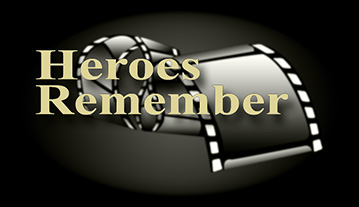Wireless Air Gunner Training
Heroes Remember
Wireless Air Gunner Training
Transcript
They decided, most of the boys going into the Air Force, they
all wanted to be fighter pilots, that was the glamorous job, but
the Air Crew Selection Officer decided that when, certainly when
our group went through, that he wanted Wireless Air Gunners. And
I think you were, you had to have magnificent qualifications to
break his decision, and I'm sure that he found the odd pilot or
navigator, but we were Wireless Air Gunners. So we were sent to
Kingston, to the university there for, they called it Pre Air
Crew educational attachment to brush up our high school math.
So we had a few weeks in Kingston, which was delightful,
and then we went on to Number 4 Wireless School for our training
in, in Morse Code and signals and procedures and so on, and of
course, to see a bunch of young men walking down the streets of
Guelph looking at signs going, "Di-da-di-da-dit-di-di-dit-
dit-dit," they were practising their Morse, and we really didn't
have to get much above fifteen words a minute, some of them were
very talented and got up to thirty words a minute, but I know
that, subsequently on ops, I doubt if we ever went anything
above twelve words a minute.
Well, we had our first initial initiations flight at a place
called Birch, which is not far from Guelph, and went up for a
couple, for an hour in a, in a Norseman. Then we completed our
Wireless training in air, at St. Catharines, where we were flying
Tiger Moths and Yales, which were like Harvards, and it was
interesting flying. The problem was that the pilots, the poor
devils, they were bored silly traipsing, trucking these guys
around in, letting them do their Wireless training. They wanted
to be overseas, or in, in a fighter squadron or something, they
didn't want to be at, in St. Catharines or Birch, flying these
young fellows around, most of them throwing up. So, then from,
when we finished our, our Wireless flying training in St.
Catharines, we went onto Fingal, which was Number 4 Bombing and
Gunnery School, where we learned our, our basic air, air gunnery-
ship, and that was fun, like any young man, shooting a gun was
always a great sport, and of course the pilots they used to take
great, they used to wing wrestle. And somebody
says, "What's wing wrestling?" Well, two, two of them would get
up there and they tip wings like this and try not to break their
navigation lights because the, I guess the Maintenance Officer
would get very, very ticked off if they came back with damaged
air craft, and they'd come back occasionally with the tips on the
props bent from going too low on the water and touching the water
And, so Fingal was, was very, very interesting and of course we
were all looking forward to OTU, which was operational training.
Interviewer: Before you get to that, can you describe to me the
gunnery training that you underwent.
Yeah, initially, you were in a static display on the ground, in
a, in a turret, and you kept on maneovering the turret and
following any, anything that was moving to get the feel of, of
aiming the guns where your eyes looked. Then we were flying in
what they called Bolingbrokes, which was a very, very tight
little mid-upper turret, and then we did air-to-air firing,
air- to ground firing, and these were all with 303 machine guns,
and it was, it was learning how to clean, clean your guns,
if you had a misfire or a blockage, you learned how to, how
to do that in the air.
Interviewer: Mr. Pitt, would you also be learning deflection
shooting at this stage?
Oh yeah, well, all, all, all air-to-air is deflection. You have
to lead your target and to do that, you have to know your
guns and have an idea of distance and so on.
Interviewer: What kind of gun sighting would you be using at
that point in the war?
Those were just, let's see, this I'm trying to think of the names
of them. You're going to try my memory on some of these things.
This was a little orange dot that I know we used to use, it was
in a, in a sight and you would get your target and then you would
lead it and you'd put the dot in front of the target and hope
that you had enough deflection.
Description
Mr. Pitt describes his training experiences, including an amusing story about the antics of some of the training pilots ‘wing wrestling'.
Robert Anthony John Peter (Tony) Pitt
Mr Pitt, the oldest of two children, was born in Sussex County, England, in 1925 and immigrated to Canada with his family in 1929. His Father was in the hotel business and managed the Chateau Laurier in Ottawa before moving to Halifax in 1936. Upon the outbreak of war his father joined the Army and a couple of years later Mr. Pitt joined the Air Force. After completing his training to become a Wireless Air Gunner he was posted to Britain, and subsequently, to India where he would serve until the end of the war.
Meta Data
- Medium:
- Video
- Owner:
- Veterans Affairs Canada
- Duration:
- 04:54
- Person Interviewed:
- Robert Anthony John Peter (Tony) Pitt
- War, Conflict or Mission:
- Second World War
- Location/Theatre:
- Canada
- Branch:
- Air Force
- Units/Ship:
- 203 Squadron - RAF
- Occupation:
- Wireless Air Gunner
Related Videos
- Date modified:



